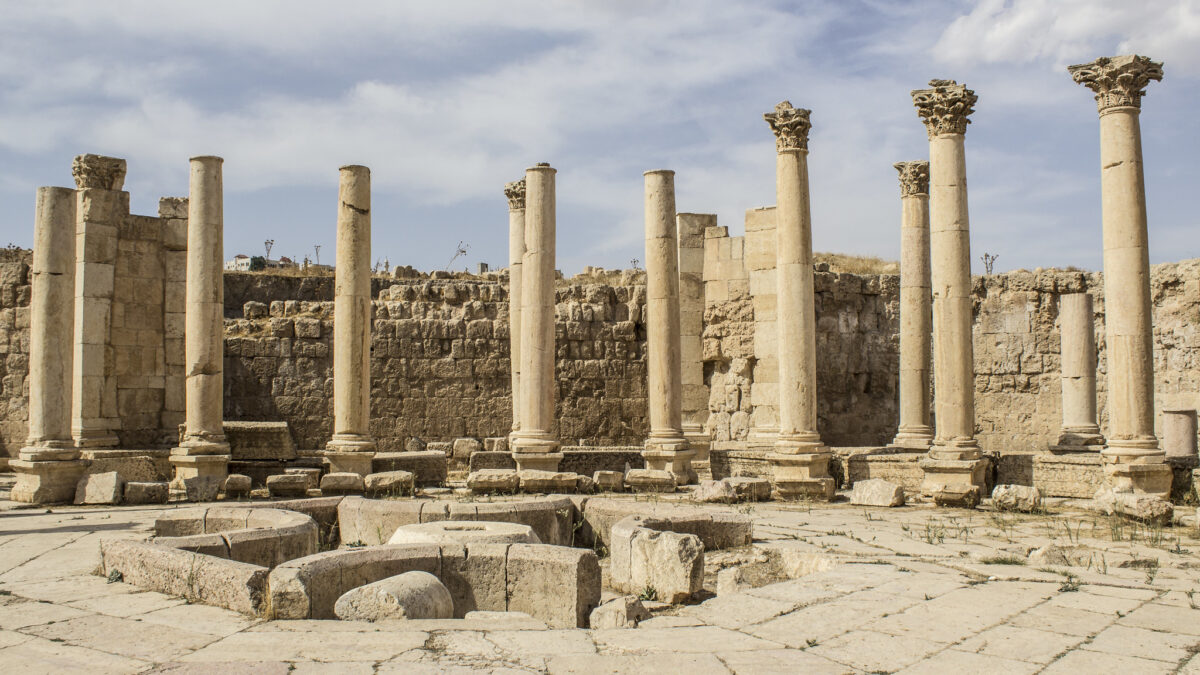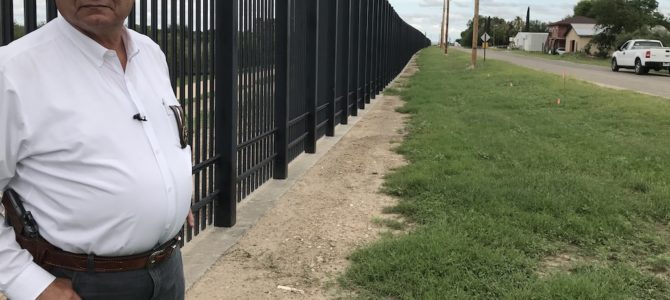
DEL RIO, Texas — Something strange is happening here in remote Val Verde County, Texas: the whole world is showing up. In recent months, migrants from far-flung places like Haiti, Venezuela, Africa, and even Uzbekistan have appeared on the Mexican side of the Rio Grande, and waded across. Their numbers include families with small children, pregnant women, and the elderly.
Not all of them make it. Sheriff Joe Frank Martinez says he and his deputies have seen nine drownings in the county since January — already double last year’s total. The first one was on Jan. 17, a 33-year-old woman from Haiti. “She was pregnant with twins, at term. So we’re counting all three.”
Residents of this vast stretch of Texas borderland, which sits about 150 miles west of San Antonio and shares more than 100 miles of border with the Mexican state of Coahuila, say nothing like this has ever happened before. In years past, a modest number of Mexicans might have crossed from the town of Acuña, across the river from Del Rio. But those were mostly men seeking work, often on the ranches that dominate the rough landscape here, a limestone plateau east of the Chihuahuan Desert cut by steep arroyos and watered by the immense Amistad Reservoir that spans the border.
Out on those ranchlands, a completely different demographic of migrants is also crossing in near-record numbers: groups of single adults, mostly men, sometimes clad in camouflage and determined to evade law enforcement. They’re leaving behind cut fences, smashed gates, burned down barns, and burglarized houses.
And it doesn’t end when they get picked up by smugglers on the U.S. side. High-speed car chases have become commonplace here, says Sheriff Martinez, with nine fatalities so far this year.
In South Texas, Val Verde County Sheriff Joe Frank Martinez tells The Federalist that migrants are surging into the area, and a growing number are drowning while trying to cross the Rio Grande. Nine have drown since Jan. 18, compared to four all of last year. pic.twitter.com/oD3rJTQDVs
— The Federalist (@FDRLST) June 4, 2021
Unlike the Rio Grande Valley at the southern tip of Texas, or El Paso to the west, this area has never been a high-traffic stretch of the border for illegal immigration. But it is now, at least in relative terms.
Last year, U.S. Border Patrol apprehended only about 30,000 illegal immigrants in the Del Rio sector, which covers 245 miles of the U.S.-Mexico border, including Val Verde County. So far this year, that total is 119,000 people, hailing from dozens of countries all over the world.
Like other areas of the border controlled by powerful Mexican drug cartels that have monetized illegal immigration, the migrants coming into Del Rio tell local law enforcement officials they had to pay someone before they crossed the river. “They don’t know who,” says Martinez, “but they don’t want to be interviewed at all because threats have been made and they still have family, wherever they’re coming from, so they don’t want to say anything.”
The sheriff, a self-described “proud Democrat,” doesn’t hesitate to blame the crisis in his county on the Biden administration: “These numbers are up because people knew they were going to be allowed in. If this administration says, ‘We want to welcome you,’ well, they’re going to come.”
Del Rio ‘Never Used to Be This Way’
The problem with mass illegal immigration in a place like Del Rio, though, is that there’s not an easy way to get out of town if you don’t have a vehicle.
Del Rio is the largest city on the U.S. side of the Rio Grande between El Paso and Laredo, but with fewer than 50,000 residents, transportation options are limited. Only a couple of Greyhound buses come through every week, and there’s usually only one commercial flight a day from the local airport.
When U.S. Customs and Border Protection facilities became overcrowded last month, federal border officials began dropping migrants off at a truck stop in town that doubles as the bus station. When they dropped off a group of about 300, it got the attention of local residents.
“When you dump those volumes of people into a community of our size, it becomes very noticeable very quick,” says Beau Nettleton, a rancher and county commissioner. He says local residents are bearing the brunt of a larger problem they never had to deal with before, and that if the federal government is going to release these people into the United States, they need to release them into communities with major rail lines and bus lines and airports. “We are not one of those communities.”
Rabbi Manny Rodriguez, who retired as a Border Patrol chaplain in February, told me Del Rio “never used to be this way.” Every week now, he says, groups of hundreds of migrants are dropped off at the bus station, some with nowhere to go and no way to leave town.
The community, he says, is on edge. Car chases have become commonplace, forcing one of the local schools to go on lockdown last week, and residents are increasingly wary of the groups of migrants they see around town. The 51-year-old Rodriguez says in all his years as a Border Patrol agent, he never carried a weapon off-duty, but he does now.
Some residents are less wary but no less overwhelmed with the sheer volume of migrants being released. Tiffany Burrow, director of the Val Verde Border Humanitarian Coalition, which was founded by a group of Del Rio pastors during the migrant surge of 2019, says they have “never seen numbers like this.” Back in January, her group was assisting about 25 people a day. As of last week, they were averaging about 300 a day, an all-time high.
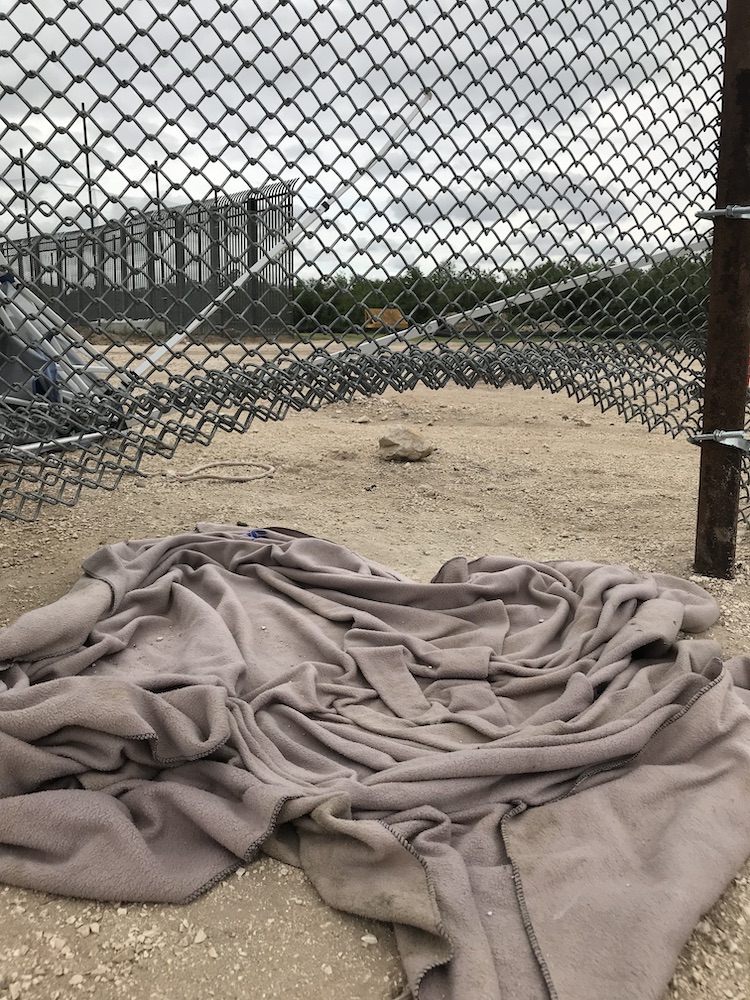
To keep the migrants moving, Burrow has implored Greyhound to send more buses, and on several occasions has chartered private buses from Houston. On the afternoon I’m there, several dozen Haitians, including a few pregnant women, chat on smartphones and get ready to depart in taxi vans to the airport for the one afternoon flight out of town.
Burrow tells me her group isn’t licensed to house people overnight, but that most of the families can afford to buy plane or bus tickets, or stay in hotels until they secure travel out of Del Rio. “These families are not necessarily poor,” she says. “They have been thinking about this, planning for this, and they bring their resources with them.”
That’s a marked contrast to other parts of the border like the Rio Grande Valley, where most illegal immigrants apprehended by Border Patrol are from Central America and Mexico, and arrive with little or nothing. Here, a different dynamic is playing out, with migrants often flying into Mexico City or Monterrey and taking commercial buses to Acuña or Piedras Negras, and from there fording the Rio Grande, claiming asylum, and paying their own way out of town after being released from federal custody.
The numbers here, however, have so overwhelmed federal authorities that many migrants are being released with what’s called a “notice to report,” which isn’t the same as a “notice to appear.” That is, they don’t have a court date, only a request that whenever they get to where they’re going in the United States, they call the nearest immigration court and request an initial asylum hearing. Rodriguez, the rabbi, says it amounts to an “honor system.”
‘There Is No Plan’
Immediately upon taking office in January, President Biden ushered in a host of changes at the border with little to no communication with local authorities. A section of border wall in Del Rio that was begun last June was abruptly abandoned, along with other construction sites all up and down the border.
The one in Del Rio, which was hastily fenced off, looks as though workers simply dropped everything and walked away. Steel beams and support are strewn about and cordoned off by temporary chain-link fencing. Open trenches extend out from a short section of the completed wall. Behind the trenches, the old border fence runs parallel, with sections of it missing near what would have been a new gate. There, a section of chain-link fencing has been pried up and a blanket thrown down where a group of migrants came through recently. Sheriff Martinez tells me his deputies patrolled here the day before, and the breach hadn’t been there, which means they likely came in overnight.
The sheriff says the Biden administration has no answers for problems like this. Every week, he and other border sheriffs have a call with officials from the Department of Homeland Security, and every week he asks them what is the plan. He says they have yet to give him an answer: “There is no plan.”
Meanwhile, the residents of Val Verde County are left to deal with the situation as best they can. One woman, Marsha Morgan, who doesn’t live in the area full-time but owns property along the Rio Grande, discovered that her section of the riverfront had become a favored crossing point for smugglers and migrant families.
She learned this not from law enforcement officials, but because she and her husband saw their property first on Facebook and then on Fox News. They came as soon as they could, only to find that Border Patrol and the Texas Rangers were using their property as a staging ground to process and transport migrants. Morgan was shocked.
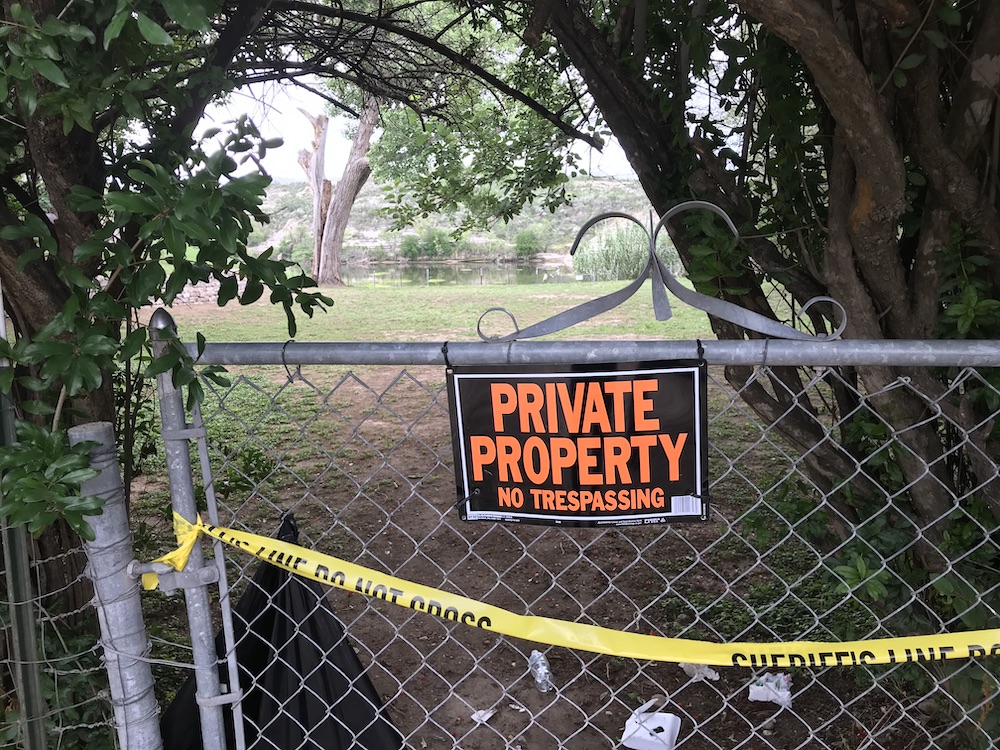
“I don’t want to be involved or be a part of this in any way,” she says. “I’ve had people come to me and say, ‘We didn’t know who owned that property, we were wondering if it was cartel-owned.’” She and her husband are staying in town to monitor the situation, but they don’t feel it’s safe to stay at the property, not knowing who might show up there at any time. She adds that in the 14 years they have owned the place, nothing like this has never happened.
It’s the same story all across the county. At a town hall meeting last Friday evening hosted by a local church, about 250 residents came out to express their displeasure and demand solutions — not from local officials, some of whom were on hand for the meeting, but from Texas Gov. Greg Abbott, who is traveling to Del Rio this week for a “Border Security Summit” with local leaders.
“Just enforce the law,” says former Del Rio city councilman Lee Weathersbee, drawing loud applause from the crowd. Only the state of Texas, he adds, can be trusted to meet a crisis created by Washington. “Greg Abbott didn’t open the border, Biden did.”
Abbott’s plan is to charge everyone who crosses the border illegally with “aggravated trespass,” and arrest them. “They’re going to spend a half a year in jail, if not a year in jail, as well as other actions I will be announcing next week,” Abbott told Sean Hannity last week after issuing a disaster declaration for 34 border counties.
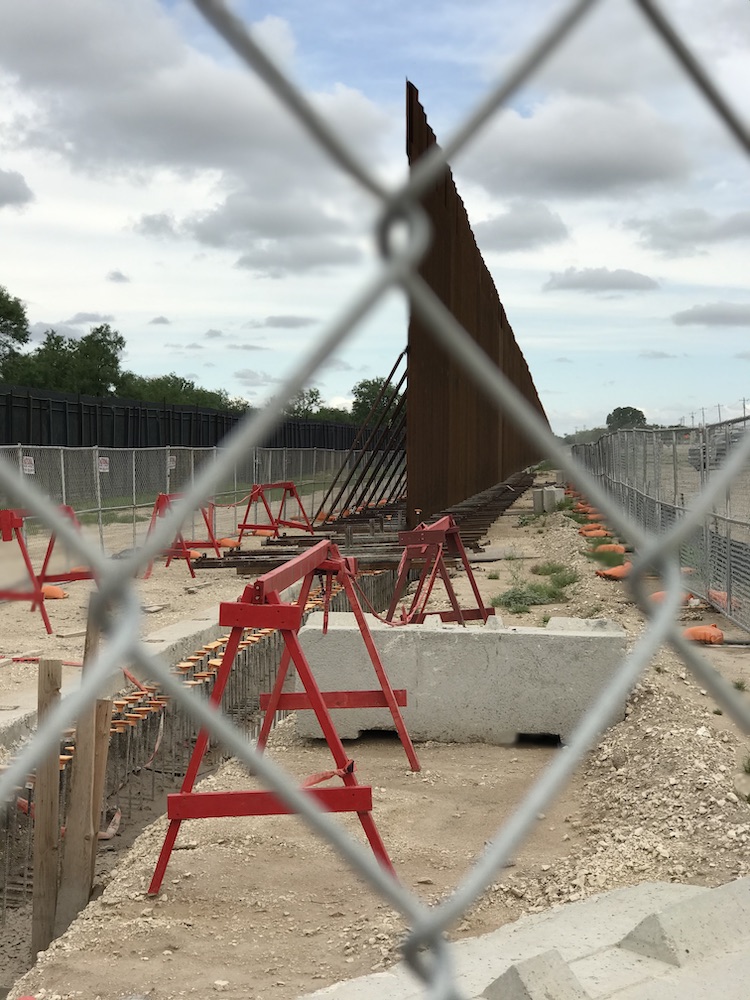
But not everyone in town thinks that’s such a good idea. Former Val Verde County Judge Laura Allen told the crowd that there simply aren’t enough prison beds in the county to incarcerate everyone who crosses the border.
“We have eleven-hundred people in federal custody in our prison right now in Val Verde County. We have about a hundred and thirty [county] beds,” she says. “So we’re very limited.” Sheriff Martinez was more blunt: “Where is Abbott going to put them all?”
Whatever Abbott has planned, he’s going to get an earful this week in Del Rio. Nettleton, the county commissioner, says people in his community are afraid. “They don’t know when they see somebody out in the pasture if it’s somebody just trying to get through or if it’s somebody trying to haul drugs. And it starts creating tension and fear among people that live here out on these ranches and how they’re going to deal with it.”
“Ultimately,” he says, “somebody is going to get shot. It’s just a matter of time before that happens. We’re sitting on a powder keg and it’s just a matter of time before it blows up.”
The sheriff isn’t optimistic about any plan, either from the governor or the feds, and with summer’s heat coming on and tensions rising, he worries about the months ahead. “We have never experienced an immigration issue like this in Val Verde County. It’s never happened, and our people aren’t used to it,” he says, and then pauses. “They’re not going to stop coming. And we’re on our own, here on the border.”


